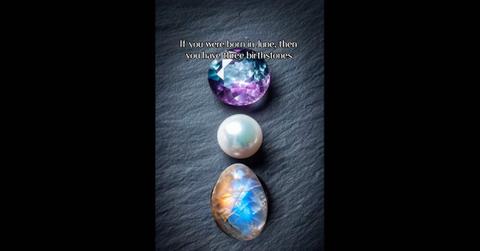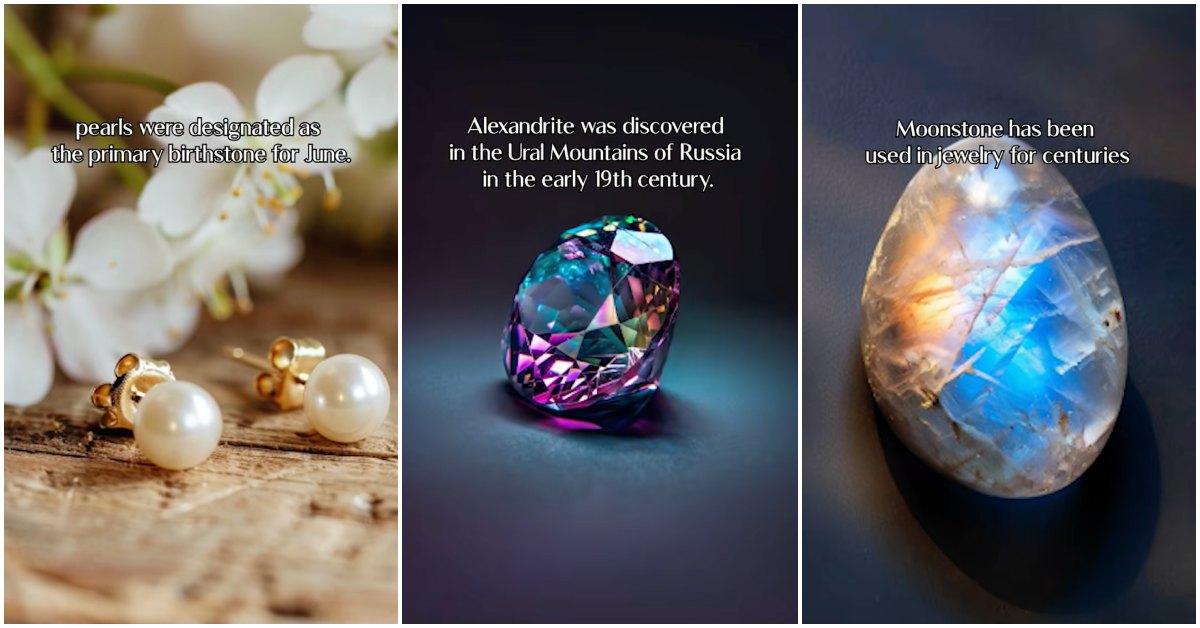June Babies Get Options With Three Birthstones, but What Makes Them So Special?
It just doesn't seem fair...
Published June 3 2025, 1:24 p.m. ET
If you were born in June, August, or December, consider yourself lucky as you’re not tied to just one birthstone, but three. That gives you way more flexibility when it comes to choosing a gem to associate with or picking out birthstone-centered jewelry.
Take August, for example. Its lineup includes peridot, spinel, and sardonyx, three completely different stones. As for December babies, they have the luxury of choosing between turquoise, tanzanite, and zircon.
And then there’s June, arguably the best of all. June’s birthstones are pearl, alexandrite, and moonstone, all known for their rarity, unique beauty, and, in some cases, serious value.
But why do some months get three birthstones while others only have one? And more importantly, who even decides this stuff? We’ve got some answers.
Why does June have three birthstones?
June has three birthstones, and it’s likely due to a mix of gemstone availability and consumer demand. According to modern standards, pearl was June’s original stone, but pearls were once extremely rare and wildly expensive (before we figured out how to culture them). So, the birthstone lineup was eventually expanded to include moonstone and alexandrite.
For context, pearls form naturally inside mollusks like clams and oysters. Because of their rarity, they used to carry a high price tag and were often reserved for the wealthy and noble. According to PBS, a single strand of pearls could cost anywhere between $500 and $5,000 before the early 1900s, which would be a fortune back then! But once cultured pearls (grown with human help) became more common, prices dropped and they became far more accessible to everyday buyers.
As for moonstone, while it isn’t as rare as pearl, that doesn’t mean it’s always cheap. According to the International Gem Society, high-quality moonstone can cost up to $400 per carat, depending on its clarity and color, among other features.
And then there’s alexandrite, which is actually considered even rarer, and potentially more valuable, than pearl. According to Stones Jewelry, alexandrite was first discovered in Russia in the 1830s and is widely known for its unique color-changing effect depending on the light. It can appear purple, blue, or even reddish under different lighting conditions.
The more natural and authentic the alexandrite, the higher the price, with some stones selling for around $10,000 per carat or more, according to the American Gem Society. Because of its hefty price tag, some people opt to swap in amethyst as a more affordable alternative, even though that stone is reserved for February babies.
Who created the official birthstone list?
While there’s been plenty of debate over which birthstone was originally tied to which month, since it’s changed quite a bit over the centuries, the official birthstone list we follow today was established back in 1912 by the American National Retail Jewelers Association (which is now known as Jewelers of America). That’s the list most people go by now, and yes, it does have June listed with three birthstones.

